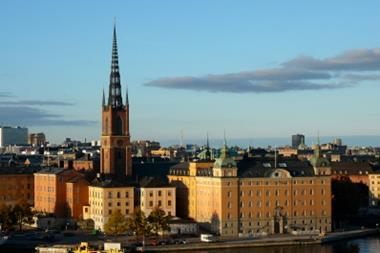Swedish life and pensions provider Folksam Liv returned 12% on its portfolio for calendar 2014, up from 7.6% the year before.
The company said that both equities and fixed income securities contributed to the substantial increases in returns.
At end-2014, assets under management had increased to SEK350bn (€38.1bn) from SEK304bn at the end of 2013.
However, the solvency ratio had fallen to 155% from 161% the previous year.
Folksam said the decline was largely the result of increased technical provisions because of lower interest rates.
But premium income rose by 57%, from SEK8.6bn in 2013 to SEK13.4bn in 2014.
The company said demand was driven by “consistently strong key figures, broad distribution and strong interest for traditional life insurance with guarantees”.
It said volumes within pension investments increased sharply, especially within endowment insurance and individual occupational pensions.
The bonus interest on traditional insurances went up to 7% (it is now 8% from 1 February 2015), making it a very attractive investment alternative.
Jens Henriksson, president and chief executive at Folksam, said: “Folksam, along with its subsidiaries, showed continued strong economic strength in 2014.
“We are growing in virtually all areas at the same time, and we took important steps on our way to becoming a more modern financial institution.”
But he added that Folksam has been impacted by both low market rates and comprehensive weather-related claims costs, as well as sweeping regulatory changes.
Meanwhile, local government pension scheme KPA, which is 60% owned by Folksam, made returns of 13.3% for 2014, compared with 8.2% for the previous year.
This result took five-year average returns between 2009 and 2014 to 8.5%.
At end-2014, KPA’s portfolio was invested 55% in fixed income, 39% in equities (16% Swedish, 23% international) and 5% in property, with 1% in alternatives, including hedge funds.
The company said it was able to give a substantial allocation to riskier investments such as equities because its solvency was strong (in spite of a slight decline from 172% at end-2013, to 166% a year later).
During 2014, premium income rose nearly 3%, to SEK10.2bn from SEK9.9bn.
As in the previous year, the company said this was because more people chose KPA Pension as their occupational pension provider, actively or by default, particularly for the KAP-KL collective pension, and also PA-KFS.










No comments yet